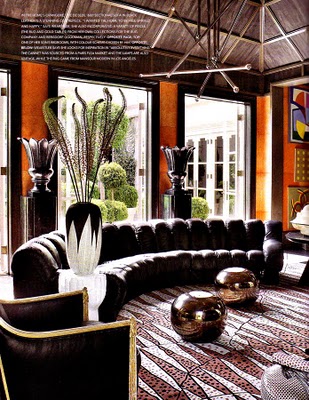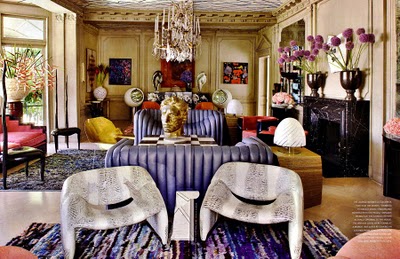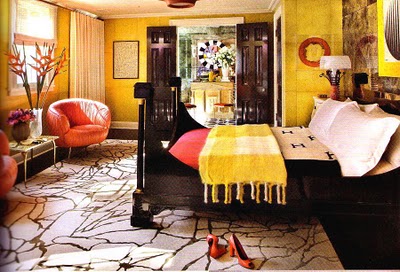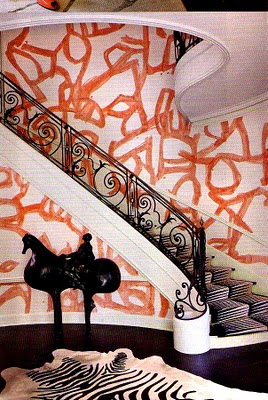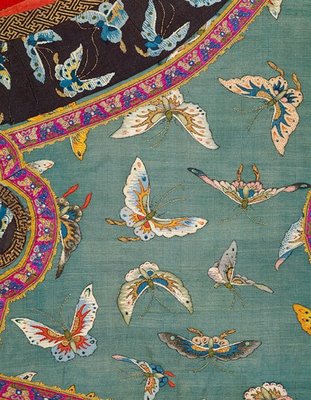Posts from the ‘Ornament’ Category
To my own tastes I like Ms. Wearstler’s bright white compact building on La Cienega because in the evening the windows of her studio glow— chandeliers like a chimera in my brain–in a flight of fancy. And because on the other side of her building, from my rooftop deck, I can see the lattice fencing on her building’s roof and imagine that’s where her chaise lounges lie.
She is that heroine in our American Story of success that we love in LA: good timing, smart alliances, hard work and get it done. No nonsense. This particular story tends toward a future of luxury and glamor. Age never creeps in, because the shoe is already on the foot. The past is a sentence in a biography that ends with a point to the future: “She currently resides in Beverly Hills, California.”
You may want to take notes. This is the story of the self made. You are not who you are or where you come from; you are where you want to go. Your interior can and will evoke your future. A Brand is a Brand is a Brand. Ms. Stein might have said if she were alive and had taken notes.
Ms Wearstler like all of us here in Los Angeles can become sacrifice to a deity larger than ourselves. Los Angeles is the place to come to remake oneself. It is the mythic move west. This is the story of our parentage; it is one of the stories of America. But it can also be the story of a future that lacks the congruency of the past.
 Ornament can be decorative but the decorative is not ornament on it’s own. One thing that is necessary to be called ornament is a unit (ornamental unit) or what can also be called a “motif.” The unit to be manipulated can be as simple as a square or as complex as a flower.
Ornament can be decorative but the decorative is not ornament on it’s own. One thing that is necessary to be called ornament is a unit (ornamental unit) or what can also be called a “motif.” The unit to be manipulated can be as simple as a square or as complex as a flower.
One typically looks to precedent to find these motifs as it has all been done before, more or less. Page through Owen Jones’s the Grammar of Ornament (1856) and find the motifs of many contemporary designer’s affection.
When the unit is dismissed or abstracted to a mere object in space it becomes decoration. Objects can still move through space, just not in the same way. Thomas Beeby in an article titled, “The Grammar of Ornament/ Ornament as Grammar” distinguishes 9 ways in which an ornamental unit can be manipulated. Here they are:
Translation, Rotation, Reflection, Inversion
Translation reflective inversion
slipped reflection alternation
Acceleration, Deacceleration & Figure ground
More specific examples to follow as well as a further exploration of the idea from Kent Bloomer’s book “The nature of Ornament” that ornament works to transform an experience though the imagination to create a simultaneous occurrence between material and form and material and meaning.

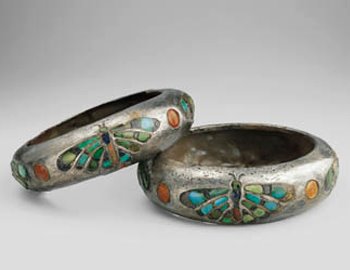

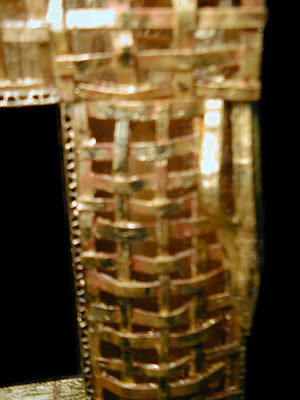

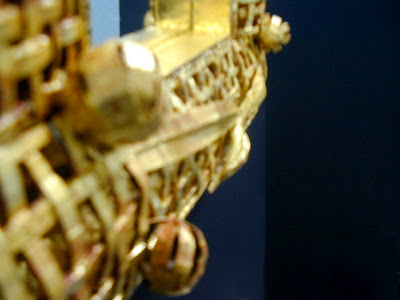 Cintamani is an Ottoman motif. The meaning of the motif is not certain. The word itself means jewel; perhaps it represents the third eye, evolving the point of one’s self-actualization.
Cintamani is an Ottoman motif. The meaning of the motif is not certain. The word itself means jewel; perhaps it represents the third eye, evolving the point of one’s self-actualization. Encyclopedia Mythica will expand: “In ancient Greece, the oracle was a place where these divinely-inspired prophesies of the future were passed down to mortals…To be an oracle, the place needed to have a variable and periodic attribute that could be subject to the interpretation of the priesthood. The priests would then ascribe both the event and the interpretation of the event to their patron god or goddess…the ancient oracles of Zeus were areas where priests could interpret the wind rustling through the trees…The most famous oracle was that of Apollo at Delphi, discovered as a fissure in the side of Mt. Parnassus emitting a gas that would cause seizures among the goats that grazed nearby…The Pythia was the priestess of this oracle who was crowned in laurel and seated on a tripod perched over the cleft that produced the intoxicating vapors. Her utterances while under the influence were usually so disjointed that additional clergy were needed to provide interpretation.”


